It is near impossible to express any admiration of the antebellum South without incurring the wrath of the perpetually offended mob, online or otherwise. Even acknowledgment in the accomplishments of those men once universally and unequivocally admired by all Americans, such as Washington, Jefferson, and Lee, now brings the occasional sneer or mark of condemnation from “polite” society. Unfortunately, for these unhappy and irreverent post-modernists nothing Southern is sacred, especially if it is Confederate. Not even the red and white Crosland colors, which have adorned the official Maryland State Flag since 1904, are left unmarked for their ire. A quick internet search of news articles on Maryland’s flag validates this threat. Yet, if it is Confederate heritage these people despise and want to eradicate, then, they might as well dispose of the entire Maryland flag itself, for its history is inextricably linked with the Maryland men who wore gray.
To fully appreciate the Confederate history associated with Maryland’s flag, one must begin with the parents of George Calvert, the First Lord Baltimore, who received a charter for the colony of Maryland from King Charles I of England in 1632. There is no doubt that Calvert’s father was Leonard Calvert, a member of the landed gentry in North Riding Yorkshire, but the identity of his mother has puzzled historians for over a century. They agree that she was a Crosland from West Riding Yorkshire, but her supposed name Alicia is only supported by tradition, not strong evidence in the historical record. What is certain is that George’s mother died while he was still a child, and his father married a Grace Crosland of Crosland Hill soon thereafter, who was possibly the niece or cousin of Alicia.[i] It is the coats of arms from the Calvert and Crosland families where Maryland derives the design and colors of its current flag.
Though the son of a gentleman, George Calvert was not a nobleman upon his birth in either 1579 or 1580; moreover, his family was not armigerous, that is, entitled to an official coat of arms. In fact, Calvert’s family were recusant Catholics who frequently found themselves in trouble with the English government, which had been doing its utmost to stamp out Catholicism under the reign of Queen Elizabeth during Calvert’s childhood. By the time George matriculated at Trinity College at Oxford University as a young man in 1593, he had made, at least, the nominal conversion to Anglicanism.[ii]
From that point forward, George Calvert rose prolifically through the ranks of English politics and society. He graduated from Oxford in 1597 with a bachelor’s degree and, afterward, received a master’s degree in 1605 or 1606. In 1613, he was appointed clerk to King James I’s Privy Council. Four years later, in 1617, he was knighted. This was followed by a royal appointment, in 1619, as Principal Secretary of State to James I. Then, in 1622, Sir Richard St. George (Norroy King of Arms) granted him an exemplification for a heraldic coat of arms, of which the shield was a “paly of six” in gold and black (the tinctures of “or” and “sable” in heraldry). After an impressive career serving his king, Calvert resigned his position as Secretary of State and converted back to Catholicism in 1625.[iii] The conversion back to his childhood religion did not harm his standing in the eyes of the king, who, at the same time, rewarded Calvert’s faithful service by elevating him to Baron of Baltimore, due to his “gravity of manners, singular gifts of mind, candour, integrity, and prudence.”[iv] Upon this grant of nobility, Calvert’s coat of arms was officially given a full achievement in recognition of his noble status, marked by two leopards supporting either side of his shield.[v] Finally, just prior to Calvert’s death, 1632, Charles I granted him a proprietary charter for Maryland.
While the exact origin of the gold and black paly of six on the Maryland Flag is concrete, that of the red and white “cross bottony” (the tinctures of “gules” and “argent” in heraldry) is a little less clear. Judging from the design of the cross (bottony style) and its colors, knowing the maiden name of George Calvert’s mother and step-mother, and knowing from where in England his maternal side came, one can unequivocally conclude that these were the arms of the Croslands from Crosland Hill.[vi] It is also acknowledged that it was not George Calvert, but his son, Cecil, Second Lord Baltimore, who was the first Calvert to quarter the Calvert paly of six with the Crosland cross bottony, on the shield of the Calvert family’s coat of arms. The first known instance of this quartering was done on a map of Maryland in 1635 from A Relation of Maryland, a pamphlet published with Cecil’s authority in 1635 (Figure 1).[vii] Another early example is from a map made in 1671 by John Ogilby (Figure 2).[viii] What is perplexing, regarding the quartering, is on what authority (if any) Cecil had in using the Crosland arms. If Alicia Crosland (Cecil’s grandmother) was related to the Croslands from Crosland Hill, it would still not grant him the right to officially use the Crosland arms under the rules of English heraldry, as she clearly had a brother, Thomas, who bore the arms and then passed them to his son Nathaniel. Thomas Crosland did marry a second time, with his second wife giving birth to Grace (Cecil Calvert’s step-grandmother); however, that junior line, known as the Croslands of Newby, had its coat of arms (cross bottony with a crescent) passed down to Grace’s brother John.[ix]
Thus, by the rules of heraldry, Cecil never had authority to quarter the Crosland coat of arms with that of the Calverts; however, one theory put forth by historian Thomas Coakley satisfactorily explains this conundrum. Coakley discovered that whenever Cecil Calvert and the other Barons of Baltimore were conducting official English business, they only used the paly of six as their coat of arms. But in their capacity as Lords of the Maryland, of which they were “true and absolute Lords and Proprietaries,” they used the quartered coat of arms, most notably on official documents within the colony.[x]
This position is well supported by the historical record of the official Great Seal which was used during the proprietary rule of Maryland by the various Lord Calverts, beginning with Cecil. Impression of this seal, which dates back to 1648, has been preserved on numerous documents from the proprietary era. The obverse side of the seal is an equestrian figure of the Lord Proprietor, Cecil Calvert, reflecting his authority at the time. The reverse side of the seal displays the shield containing quartered Calvert-Crosland coat of arms; however, unlike the two maps shown above, the coat of arms on this official Great Seal has a plowman and a fisherman, rather than the two leopards, reflecting the source of Maryland’s economic strength in agriculture and fisheries during the colonial period (Figure 3).[xi]
Whereas the design of the Great Seal during Maryland’s provincial period under Calvert rule is incontrovertible, the design of the Maryland flag at that time is not. No flag from this time exists and little description can be found. Nonetheless, the scant record which does exist, such as Heaman’s Narrative and other primary sources of the colonial period, points to the use of a flag which was black and gold (no mention of red and white), the colors of the Calvert family only.[xii] It would naturally follow, then, that the design of the flag was likely in the paly of six.
In the decades following Maryland’s declaration of independence and adoption of statehood under its new constitution in 1776, both the Great Seal and the Maryland flag of the proprietary period were cast aside. The seal that was adopted in 1794 had a female figure representing justice on the obverse, and it had tobacco, wheat, and a ship on the reverse. The seal was changed in again 1817, and, like its predecessor, did not contain any recognition of Maryland’s rich colonial history under the Calverts (i.e. Calvert-Crosland quartered coat of arms).[xiii] As for the flag, no design was ever officially adopted by the Maryland government in the late 18th century following statehood, nor was there any official flag throughout the 19th century.
Despite the sudden disappearance of the quartered Calvert-Crosland arms from the Great Seal, it did not last for long. By 1854, upon the recommendation of Governor Louis E. Lowe, who believed the Great Seal should consist of the historic coat of arms of Maryland, the Calvert-Crosland quartered shield returned to the reverse side of the seal (the American Eagle was engraved on the obverse). Unfortunately, the reverse of this Great Seal of Maryland included noticeable errors. The paly of six became a paly of five, while the portions of the cross bottony, which should have been red and white, were black and white (Figure 4).[xiv] This was ultimately corrected in 1876, when the state government, based on old proprietary era documents at hand, ordered that the reverse of the Great Seal be corrected to its exact 1648 specifications. In 1884, a successful search was conducted for the original Great Seal of 1648, which was found in the vault of the Treasury Building in Annapolis, confirming that the new seal completed in 1879 was an exact reproduction.[xv] Still, to this day, the design copied from the reverse of the 1648 Great Seal is officially used by the state of Maryland; the original obverse design, the equestrian figure of the Lord Proprietor, was officially restored in 1959.[xvi]
As for the flag, though one did not officially exist prior to the 20th century, the reintroduction of the Calvert-Crosland arms on the Great Seal in 1854 was followed by a public reappearance of black and gold flags, representing the Calvert colors.[xvii] This was never more evident than during the early days of the War Between the States in April 1861, as attested by Bradley T. Johnson, who would go on to become a Brigadier General in the Confederate Army and arguably Maryland’s most distinguished soldier in that war. Writing several decades after the war, as a contributor to the twelve-volume set entitled Confederate Military History, Johnson gave a clear indication of what most Maryland citizens likely considered their state’s unofficial flag, on the eve of the riots in Baltimore:
On the night of April 18, 1861, Maryland was standing alert, braced up, ready to charge at the word. Virginia had seceded, the North was marching. Maryland was the outpost to receive the first attack. At that hour there was no division of opinion. The State rights clubs had been flying the secession flag, the stars and bars of the Confederacy, and the palmetto of South Carolina. The Union clubs had over their halls the stars and stripes; but during the afternoon of April 18th the Union flags were hauled down and the State flag of Maryland everywhere substituted. And the black and gold was everywhere saluted with cheers, with shouts, with tears.[xviii]
While the historic record prior to the War Between the States points to the recognition of the Calvert family colors as Maryland’s unofficial flag, the state government officially adopted the Crosland colors along with the Calvert colors as the state flag in 1904.[xix] Attributing this change solely to the return of the original Great Seal is a logical explanation, but immediately requires further investigation, for though the Great Seal returned in 1854 with the Calvert-Crosland quartered coat of arms, it was fifty years before the Calvert-Crosland colors were also made the official Maryland flag. Perhaps, the seal’s existence and further correction in 1876 brought historical weight to bear on the addition of the Crosland colors, but that twenty-eight-year gap, itself, similarly weakens that argument.
After carefully examining the record, it becomes clear that the quartering of the Calvert and Crosland arms on Maryland’s flag and its official adoption by the state were largely influenced by those Marylanders who either fought for the Confederate States of America or carried on its legacy after the war, at least as much as it was any other factor. An initial cursory investigation using the internet puts forth the argument that during the war, since Maryland did not secede, the recently popular black and gold flags which represented the Calvert Arms became associated the Union, while Confederate-sympathizing Marylanders, as response to this, adopted the colors of red and white which represented the Crosland arms. The current Maryland Government Secretary of State webpage on the history of the Maryland flag, which posits this theory, continues by stating:
During the war, Maryland-born Confederate soldiers used both the red-and-white colors and the cross bottony design from the Crosland quadrants of the Calvert coat of arms as a unique way of identifying their place of birth. Pins in the cross bottony shape were worn on uniforms, and the headquarters flag of the Maryland-born Confederate general Bradley T. Johnson was a red cross bottony on a white field… As the slow process of reconciliation took place in post-Civil War Maryland, a new symbol emerged. A flag incorporating alternating quadrants of the Calvert and Crossland colors began appearing at public events. While the design derived directly from the seventeenth-century Calvert family coat of arms, for Marylanders of the 1880s the new banner must have conveyed a powerful message. The passage of time had gradually diminished the passions of former Rebels and Yankees, permitting them to work together once again. Now the colors they had fought under had come together as well, symbolically representing through this new flag the reunion of all the state’s citizens… The adoption of this new flag by the Fifth Regiment helped popularize the design. The Fifth was the largest component of Maryland’s military after 1870, and it played a conspicuous part in major public events both in and out of the state… True to its heritage, the original Fifth Regiment consisted primarily of Maryland-born former Confederate officers and soldiers… The Fifth Regiment’s new regimental color was not the only example of former Confederates perpetuating and thereby popularizing the use of the red-and-white Crossland colors and the cross bottony design. The monument on Culp’s Hill at the Gettysburg Battlefield commemorating the Second Maryland Infantry, CSA, carries a cross bottony on each face, and the Maryland Line Confederate Soldiers’ Home, established in Pikesville in 1888, featured a large cross bottony on service badges and on invitations to events sponsored… In 1904 the General Assembly affirmed the popular support shown for a banner composed of alternating Calvert and Crossland quadrants by declaring it the State flag. [xx]
A least one recent book on Maryland history has concurred with this position, while several articles on the internet, many of which seem to have an undercurrent of criticism regarding Confederate influence on Maryland’s flag, likewise, seem to draw their information from the Secretary of State webpage or some similar source.[xxi]
While this argument has some merit, there are also significant problems with it, some of which are immediately noticeable for anyone that examines the primary sources and other historical authorities. The first and most obvious flaw is the assumption that Maryland Confederates (whether southern sympathizers or soldiers) had negatively associated the Calvert colors of black and gold with the Union. First, this completely contradicts the words, already cited, of Bradley Johnson, who proudly stated that citizens flew the black and gold banners throughout the city, in April 1861, as a sign of resistance against what they saw as the inevitable invasion of a federal army from the North. Moreover, according to Johnson, “Maryland was as ardently Southern as Virginia.”[xxii] The thought that the tens of thousands of men who hazarded enemy lines and proudly volunteered for the Confederacy in the name of Maryland would suddenly abandon their heritage after April 1861 seems highly suspect. Lastly, if Maryland Confederates viewed an unofficial Calvert flag with a Maryland government remained loyal to the Union, it would naturally follow that they would certainly have the same view toward an official symbol of the state, such as the Great Seal, but they did not. It is true that several Union regiments from Maryland displayed the Great Seal design of the quartered arms on their regimental flags.[xxiii] On the other hand, the same can be said of the Confederate regiments. Because of the ad hoc nature of Marylanders volunteering for the Confederacy, the roughly twenty thousand who did so usually wound up serving for other Confederate states, such as the 21st Virginia Infantry.[xxiv] Fortunately, however, the only two official Maryland infantry regiments in the Confederacy, the First Maryland and Second Maryland (also known as the First Maryland Battalion), had their flags preserved; these two units proudly flew the Great Seal of Maryland as the central charge or design on their respective flags, the former of which is still known as the “Bucktail” flag (Figure 5).[xxv]
Another problem with the Maryland Secretary of State position is that at the time of the war even the Maryland government, while it was aware of the cross bottony design, did not know the exact colors of the Crosland family when they remade the Great Seal in 1854 (as stated earlier in the essay). It could hardly be expected, then, that Marylanders would have exact knowledge of the Crosland family colors, so as to universally wear red and white as symbol in reference to them. This is purely evident on the flags of the First and Second Maryland C.S.A. mentioned above; for both flags, in the quartered Crosland sections of the seal, the colors are red and blue.[xxvi]
The truth is that red and white were widely accepted as the colors of secession throughout the South, not just in Maryland. This is very likely because the first official flag of the Confederate States, unofficially known as the “Stars and Bars,” prominently displayed three broad stripes in red, white, and red. There is also a strong possibility that the flag affectionately known as “Big Red” began the tradition of these two colors. On January 9, 1861, a federal steamship named Star of the West was attempting to resupply Fort Sumter with soldiers and supplies. First and second-class cadets from The Citadel, trained in artillery, fired a shot across the bow of the ship to prevent it from reaching the fort. The flag which the cadets flew that day had a blood red field with a white palmetto tree and crescent (Figure 6).[xxvii] Regardless of the inspiration, the historical record from this time refers to people throughout the South wearing various items, such as ties, rosettes, badges, ribbons, stockings, etc. in some combination or red and white. These colors were most notably worn in Union occupied areas of the Confederacy.
There are many accounts of red and white worn in Baltimore throughout the war, often at the risk of being thrown in jail, especially during President Lincoln’s imposition of martial law in the city. The Tennessean, in an article reprinted from the Baltimore Republican in 1861, entitled, “The ‘Red, White and Red,’ ” stated, “On Saturday evening [in Baltimore] two small children were arrested, charged with having upon their persons the prohibited colors, and after having been detained for some time they were released.”[xxviii] In another article, entitled, “The War on Women,” the Natchez Daily Courier reported on events in Baltimore in 1862:
Somewhat of an excitement was created yesterday afternoon on Baltimore street in the vicinity of Gay street, by the appearance of two young women on a promenade, both having upon their dresses rosettes of red and white silk, while one of them displayed a Confederate flag… The police soon accosted them, and informed them that they were under arrest… After a proper examination of the case, the Marshal decided to release them on security to keep the peace.[xxix]
One last primary source from Baltimore is of invaluable note. The Daily Exchange stated on September 12, 1861:
The military authorities of Baltimore city have interdicted the wearing of “red, white and red” emblems. All stockings, cravats, handkerchiefs, aprons, reticules, ribbons, breast-pins or other devices bearing the Confederate colors are forbidden to be worn by men, women, boys, girls or babies.[xxx]
It should be noted that in this last article, the colors of “red, white and red” were not referred to as “Maryland secessionist colors” or “Crosland colors.” They were referred to as “Confederate colors.” This leads one to believe, then, that red and white were worn by Maryland supporters of the Confederacy primarily because those were the colors of secession, more so than they were the colors of the Crosland family. Corroboration of this theory is easily confirmed by a sampling of other newspapers during the war. For instance, The Dallas Daily Herald stated on July 26, 1862:
A daughter of Capt. Semmes, commander of the famous rebel pirate Sumter, attended a wedding at St. Pauls’ church in Newport, Kentucky, night before last, enveloped in a scarf of rich material, bearing the Confederate colors, red and white, arranged in bars or stripes.[xxxi]
The Cincinnati Inquirer reported a wedding in France in 1862, where southern women attending a wedding were prevented from adorning “themselves with the red, white and red of rebellion.”[xxxii] One last newspaper example comes from The Richmond Enquirer in 1863, where a New York Herald correspondent in Union occupied New Orleans was quoted as saying:
I saw more evidence yesterday in the streets of this city of the true state of feeling in this community than ever before since I have resided here. The ladies did not hesitate to display their secession colors in every manner: their red, white and red fans, and bonnet ornaments were conspicuous in every direction, excepting among those who were in mourning.[xxxiii]
Another compelling account is that of Fannie Beers, a northern woman who married Jonathan Sturges Beers of Alabama shortly before the war and served as a devoted nurse for the Confederate Army. In 1891, Fannie Beers published a memoir of her war experience. In one chapter, she told a story, as it was passed down to her, regarding the Army of Northern Virginia. As the army retreated from Gettysburg, they came across a young girl near Hagerstown, Maryland, wearing an apron of red and white. When asked, she kindly gifted it to the 11th Virginia Cavalry. Beers stated, “The little apron was of plain white cotton… an apron of ‘red, white, and red,’ purposefully made of these blended colors in order to express sympathy with the Confederacy.”[xxxiv] In another chapter, while speaking of her time in Newnan, Georgia, she remarked that most hats “bore cockades of bright red and white (the ‘red, white, and red’).”[xxxv]
Even after the Confederacy had been defeated, some southerners refused to be completely cowed, continuing to wear secession colors. The Times-Democrat of New Orleans reported in January of 1866 that in Grayson and Floyd counties, Virginia, “There is no military authority. The red, white and red cockade, worn by secession sympathizers in 1860, is again coming into general use.”[xxxvi] That same year there was a short article from the Wilmington Daily Dispatch describing a funeral in Kentucky of ten Confederates who were murdered by order of Union General Stephen Burbridge during the war. About six thousand former soldiers and sympathizers attended the procession. According to the newspaper, “all the rebel soldiers and many others who took part in the demonstration wore the red, white and red badges.”[xxxvii]
It seems clear, then, that in Maryland the decision by civilians, who sympathized with the Confederacy, to adopt red and white colors was not a reaction against the Calvert colors of black and gold. Instead, it reflected a deep sense of their solidarity with, and their loyalty to, the Confederate States of America.
Though the direct connection between the colors of the Crosland arms and Maryland Confederates seems in doubt, there is still ample proof of Maryland Confederate soldiers associating themselves with the cross bottony of the Crosland arms. Frequently, these soldiers wore ornamental crosses in the bottony style, either made of silver (or silver-plated brass) of about one inch by one inch, as personal identifications and an homage to their beloved state (Figure 7).[xxxviii] The most indelible example of this can be found on the monument to the Second Maryland at Gettysburg. Dedicated in 1886, the four-sided monument carries a cross bottony near the top on each side; it also displays the Maryland Great Seal on the front side (Figure 8).[xxxix] One might assume that because the monument depicts the cross bottony, rather than the Calvert paly of six, and because Maryland Confederates frequently wore the cross bottony, that the soldiers viewed the cross bottony symbolic protest against their state government for remaining in the Union. Leaving aside the points already made earlier in this essay which call this argument into serious question, and in addition to the fact that the monument to the Second Maryland on Culp’s Hill also bears the Great Seal (same as it was on the Second Maryland regimental flag), it would only seem natural, for religious reasons, to choose the cross bottony over the paly of six. Ultimately, any further clarity on the causes as to why Maryland Confederate soldiers chose the cross bottony over the paly of six needs additional research, that is, if any demonstrative evidence exists. Nonetheless, it hardly seems plausible that it was done in reaction against black and golf of the Calvert arms.
The most convincing artifacts of a connection between the Crosland arms and Maryland Confederates is the military guidon used by Bradley T. Johnson when he was the commanding colonel of the Maryland Line. The Maryland Line was a short-lived command combining the First Maryland Cavalry, Second Maryland Infantry, First Maryland Artillery, Second Maryland Artillery, and the Fourth Maryland Artillery.[xl] Not only did Johnson’s headquarters guidon use a cross bottany as its charge, but the cross itself was red, on a white field that was edged in red (Figure 9).[xli] In addition, the Fourth Maryland Artillery of the Maryland Line (also known as the Chesapeake Artillery) also used a red cross bottany guidon with a white field that was edged in red (Figure 10).[xlii] There can be little doubt that the cross bottony on these flags is an homage to the Crosland arms of Maryland. The significance of red and white, however, while seemingly derived from the Crosland colors, is not necessarily clear. Again, while it makes sense to attribute the choices of red and white to the Crosland arms, it is just as likely that Johnson chose the universal “secession colors” of the Confederacy. The latter conclusion is even more likely when one, again, factors in the erroneous colors used in the Crosland portions of the Great Seal that found on the regimental flags of the First and Second Maryland, both of which Johnson commanded at different points in the war.
The historic record of the War Between the States definitively shows a direct relationship between Maryland soldiers who served in the Confederacy and the cross bottony of the Crosland arms. Nevertheless, based on all the evidence, one cannot even entertain the thought that Maryland’s government, decades after the war ended, suddenly chose to quarter the black and gold Calvert flag with the Crosland arms as a means to pay tribute to those in Maryland who supported the Confederacy and, thus, heal the state. At the same time, such an assertion, though whimsical, does not entirely miss the mark. Further research reveals that Maryland Confederates did heavily influence the adoption of the iconic Maryland flag; however, it was not a result of their actions during the war. It was, rather, because of the prominent role they had (and legacy they left) in Maryland following the South’s surrender in 1865.
Two years after Appomattox, on May 10, 1867, one of Maryland’s most distinguished militia regiments from before the war, the Fifth, was officially reorganized. At the beginning of the War Between the States, the vast majority of the Fifth regiment’s soldiers, as well as the Fifty-Third regiment’s (Maryland’s other preeminent military unit), supported the Confederacy and helped fill the ranks of the First Maryland Infantry. Many other men from these two regiments found themselves serving in the military organizations of other states in the Confederacy. Unsurprisingly, it was these former soldiers of Fifth and Fifty-Third that created the nucleus for the reconstituted Fifth. True to form, as an homage to their past, the regiment chose “a uniform suspiciously reminiscent of that of the late Confederate army. Officers wore a double-breasted frock coat of ‘best quality grey mixed cadet cloth’.”[xliii] Not surprisingly, they were known to their critics as the “the rebel Maryland Fifth.”[xliv] To this day, the insignia and coat of arms of the 175 Infantry Regiment (heir to the Fifth) honors its Confederate heritage. The insignia has a grey field in its annulet which is laid atop a cross bottony, while the coat of arms has a cross bottony and five vertical stripes, one of which represents Confederate service in the War Between the States (Figures 11 and 12).[xlv]
Throughout its existence during the 19th century and beyond, the Fifth prided itself on being the best maintained and disciplined militia of Maryland and one of the best in the entire country. From 1867 to World War I, the Fifth regiment paraded annually in Baltimore on the anniversary of its reorganization, as well as on Independence Day and Defender’s Day (anniversary of Battle of Fort McHenry). Affectionately nicknamed them the “Dandy Fifth” by Marylanders, membership in the regiment was an honor sought by many citizens of the state. Even when the Maryland legislature significantly cut annual militia appropriations in 1870 and practically every other military unit in the state disbanded, the Fifth remained strong due to its ability to raise money through honorary memberships. During the Great Railway Strike of 1877, when Baltimore was besieged by rioters, the Fifth performed admirably, saving lives and railroad property, in addition to arresting over 100 rioters. The poor showing of the only other militia regiment in Maryland, the Sixth, ended that regiment’s career, leaving the Fifth as Maryland’s only regiment for time. On August 10, 1877, the Fifth was publicly commended by Governor John Lee for their performance in the riots, increasing the prestige of the unit.[xlvi] During the last quarter of the 19th century, the Fifth was present for numerous national functions and commemorative events. Whether it was at the one hundredth anniversary of Bunker Hill in Massachusetts, the funeral train for Vice President Henry Wilson, the one hundredth anniversary of Yorktown, the Philadelphia Centennial Exposition, the Atlanta Exposition, or the inaugurations of Presidents Ulysses S. Grant, Benjamin Harrison, Grover Cleveland, and William McKinley, the Fifth was an honored military representative of Maryland.[xlvii]
Thus, the members of the reconstituted Fifth honored their defeat in the war by becoming unequivocally loyal to the United States. Notwithstanding this devotion, however, the regiment made numerous pilgrimages in the last decades of the 19th century to honor its Confederate past. In 1880, the Fifth participated in the dedication of a memorial to Maryland Confederates at Winchester, Virginia. Six years later they helped dedicate the monument to the Second Maryland on Culp’s Hill, where so many of their brother soldiers and forebears gave their last full measure. That day the Fifth escorted surviving members of the Maryland Line, who carried with them the “Bucktail” flag of the First Maryland, C.S.A. On May 27, 1890 the Fifth assisted in the dedication of a statue to Robert E. Lee in Richmond, placing a floral tribute at its base and having its band play the Confederate songs, Maryland My Maryland and Dixie. Lastly, in June 1891, the regiment dedicated a statue in Loudon Park Cemetery to James R. Herbert, officer in the First and Second Maryland Infantries, C.S.A., and original colonel of the reorganized Fifth, who had died in 1884. Owing to its fragile state, this was the last occasion the Fifth marched with the “Bucktail” flag, and even then, it was carried in a case.[xlviii]
Considering the Fifth’s rich history steeped in the Confederacy, it was fitting that its regimental flag for the first two decades following its reorganization was a flag which was a gift from “the Ladies of Baltimore” in 1868 It was the Ladies of Baltimore who had designed and sewn the “Bucktail” flag in 1861 and had gifted it to the First Maryland. They had also designed and begun to sew another flag in the first days of the war. Before it could be completed and gifted to soldiers of the Fifty-Third Regiment, Union troops occupied the city. “Carefully hidden during the years when Maryland was under federal military occupation, the flag was finished after the war for presentation to the Fifth as ‘worthy successors of that honored band.’ ”[xlix] The continuity between these two flags is quite romantic. The “Bucktail” flag had on its obverse written the words, “Presented By the Ladies of Baltimore To The First Regiment Maryland Line,” while on its reverse it carried the Maryland coat of arms found on the Great Seal (as noted earlier) and the state motto, “Crescite et Multiplicamini.” The regimental flag adopted by the Fifth in 1868 carried on its obverse the Great Seal and the state motto, while the reverse had the words “Presented by the Ladies of Baltimore” and “Maryland Guard, Fifth Regiment” along with the seal of the United States. Both flags had a blue field.[l] Interestingly enough, while the “Bucktail Flag” used red and blue for the Crosland colors, the 1868 flag used black and white, reflecting errors found on the Great Seal of 1854.[li]
It was with both “pleasure” and “sorrow,” according to the words of Colonel Charles D. Gaither of the Fifth Regiment, that the “old standard” of 1868 was “laid away” on October 18, 1889.[lii] In its place, a new flag arose, gifted to the Fifth Regiment by its own Veteran Corps. The Veteran Corps was created in 1888 and consisted of retired members of the Fifth who could not maintain active duty but wanted to stay involved with the regiment. The field of this new flag consisted entirely of the quartered arms of the Calvert and Crosland families, with the Calvert paly of six taking up the first and fourth quarters of the flag and the Crosland cross bottony (in red and white) taking up the second and third quarters (i.e. the Maryland flag).[liii]
Unfortunately, there is very little information concerning the current Maryland flag prior to its adoption by the Fifth Regiment and the Fifth’s Veteran Corps. The Maryland Secretary of State webpage references “published sketches” of the flag taken by Baltimore artist Frank B. Mayer at the time of the Baltimore sesquicentennial celebration in 1880, which are supposedly of the same design.[liv] However, according to Francis Culver, who wrote a short history of the Maryland flag in 1934, a careful investigation of the Maryland Historical Society’s collections of souvenirs, illustrated programs, and pictorial reproductions of that celebratory year failed to reveal a single instance of the current Maryland flag.[lv] In this case, Mayer’s sketches would likely have been based on his knowledge of the Great Seal, which had been corrected just a few years earlier, and his own artistic license.
Regardless, it seems more likely that credit for the existence of the flag is owed to Clayton Coleman Hall. In addition to once being a captain and first lieutenant of Company E, Fifth Regiment, Hall was also a historian and editor of the Archives of Maryland.[lvi] Not only was it Hall whose research and efforts led to the corrected Great Seal in 1876, which included the colors of the cross bottony, but it also seems Hall was the first person to design and order a physical creation of the flag. In December 1885, Hall gave an address concerning the history of the Great Seal to the Maryland Historical Society. A pamphlet of this address was published in 1886, and a copy still in existence in 1934 had written on it the words: “Mr. Sisco, with the compliments of C.C.H.” Charles and John Sisco were owners of an old flag-making business in Baltimore. The company’s records, however, were burned in the Baltimore Fire of 1904, depriving any definitive proof that Hall submitted a flag order. Nevertheless, the earliest known and incontrovertible account of the flag being used in public was during a dedication at Gettysburg in honor of Maryland Union soldiers on October 25, 1888. Participating at this event were the Fifth Regiment and other units of the First Brigade of the Maryland militia. At the time of this event, Hall was a quartermaster (with the rank of major), serving under General Stewart Brown, in the First Brigade, Maryland militia.[lvii] This seems to lend some additional circumstantial evidence to the theory of Hall being the original designer. The most substantial proof, however, rests with two Baltimore newspapers that essentially solidify the argument. On February 6, 1889, after and annual inspection of the Fifth Regiment, the Baltimore American stated:
An orderly carried the beautiful pennant which was presented to General Brown on Saturday night. The flag was made by Sisco after a design by Major Hall and contains the arms of Lord Baltimore.[lviii]
On that same topic and day, the Baltimore Sun reported:
A beautiful pennant has been presented to the General which was displayed at the armory last night. The flag, on which are represented the colors and arms of Lord Baltimore, is very handsome and was made after designs by Maj. Hall.[lix]
Aside from the Gettysburg dedication and the annual inspection of the Fifth Regiment, there are only two other accounts of the flag making a public appearance prior to its official adoption as the regimental flag of the Fifth. There is solid evidence, again, in the Baltimore Sun and Baltimore American newspapers, that the Veteran Corps of the Fifth Regiment carried the flag during its first parade as an organized and uniformed body on May 10, 1889.[lx] Later that year, during “The Maryland Exposition” in September, there is some reason to believe that the Maryland flag made an appearance during the festivities; however, like the account of the sesquicentennial celebration in 1880, said evidence is questionable at best.[lxi] After that there is no other account of the flag being used publicly. All evidence, therefore, points to the Fifth Regiment and its Veteran Corps as the first organizations in Maryland to officially adopt the flag.[lxii]
Fifteen years later, the government of Maryland officially recognized the quartered Calvert and Crosland arms as the state flag. Unfortunately, in the last few years, Maryland’s flag has come under scrutiny for its association with the Confederacy. It seems that many in the United States simply do not understand the past and because of this cannot accept it, even those beautiful symbols which reflect a noble history and should be honored. Consequently, those interested in defending Maryland’s heritage must draw strength from the knowledge elucidated in these pages, as well as from the following conclusions:
The Crosland cross bottony, regardless of its colonial past, was worn as an unmistakable symbol by Marylanders who were willing to risk everything, in the name of their state and its proud history, for the cause of republican government. Moreover, while Maryland Confederates may not have worn red and white for the exact same reason, they did wear those colors as a universal symbol of loyalty to the Confederacy. In retrospect, the confluence of these two images on the Maryland flag, namely, the red and white cross bottony, takes on an unmistakable meaning. It does not replace the history of the Calvert family, but instead adds an indelible chapter to the land that family established, standing as a tribute to those who would not allow the Constitution to be subverted or have their state denied its place amongst the South, even though their home was engulfed in the jaws of tyranny before they fired a shot in its defense.
Nor can anyone understand the Maryland flag in its entirety (Calvert arms included) without acknowledging that a strong measure of its existence is owed to those who either fought for the Confederacy or were military heirs to those who did. No doubt, the actual design of the flag is owed to the coat of arms on the Great Seal commissioned by Cecil Calvert in 1648. Yet, it was the Fifth Regiment and its Veteran Corps, reorganized and founded, respectively, by former Confederate soldiers, which first adopted and popularized the flag. While the 1904 Act, in which the Maryland government formally adopted the flag, does not mention the Fifth Regiment in the statute, the Fifth’s relevance and immense popularity within the state could not have escaped the legislators’ notice and neither could the Fifth’s flag. Finally, the historian who corrected the mistakes in the quartered coat of arms on the Great Seal and was the first to have a flag manufactured based on those arms, Clayton Coleman Hall, served in the Fifth Regiment.
It is manifestly clear that Maryland’s flag is inseparable from the history of the Confederacy. That is not to presume this tradition prevails in exclusion to all others concerning the flag, for nothing could be further from the truth. Throughout nearly every decade in Maryland’s storied past, whether on the Great Seal or seemingly countless numbers of flags, the quartered Calvert and Crosland coat of arms have borne witness to innumerable events, both noble and tragic. Nonetheless, for those natives of Maryland who seek the wisdom of the past, knowing the heroism and sense of duty under which Maryland’s Confederates fought and died, the Maryland flag should forever evoke a sense of pride.
Figure 1 (Map from A Relation of Maryland, 1635)
Figure 2 (John Ogilby Map, 1671. The map shown here is a second edition print show in original color.)
Figure 3 (Reverse side of the Great Seal of 1648)
Figure 4 (reverse side of the Great Seal adopted in 1854)
Figure 5 (Regimental flag of the First Maryland, C.S.A., known as the “Bucktail” Flag. It was named after the Marylanders charged and defeated the Pennsylvania Bucktail Sharpshooters at the Battle of Harrisonburg on June 6, 1862.)
Figure 6 (“Big Red” flag of The Citadel)
Figure 7 (Silver bottony cross, belonging to Private Gresham Hough of Company H, First Maryland Infantry, who later transferred to Colonel John Mosby’s Rangers, 43rd Virginia Cavalry, Company D)
Figure 8 (Second Maryland Infantry, C.S.A, monument at Gettysburg)
Figure 9 (Headquarters flag of Bradley T. Johnson, Maryland Line)
Figure 10 (Guidon of the Fourth Maryland Artillery, Maryland Line)
Figure 11 (Insignia of the 175th Regiment (Fifth Regiment))
Figure 12 (Coat of Arms of the 175th Regiment (Fifth Regiment))
Figure 13 (Picture of the Crosland Flag (Banner) flying outside the author’s home. Though not pervasive, these flags are available to the public through retailers on the internet)
[i] Thomas M. Coakley, “George Calvert, First Lord Baltimore: Family, Status, Arms,” Maryland Historical Magazine, 79, no. 3 (Fall 1984): 256-258, 266 http://www.mdhs.org/. See also James W. Foster, “George Calvert: His Yorkshire Boyhood,” Maryland Historical Magazine, 55, no. 4 (December 1960): 264-265 http://www.mdhs.org/.
[ii] Coakley, 257-258. Foster, 265-267. See also Mrs. Arthur Barneveld Bibbins, “The English Beginnings of Maryland,” Maryland Historical Magazine, 28, no. 4 (December 1933): 287-289, http://www.mdhs.org/.
[iii] William Hand Browne, George Calvert and Cecilius Calvert (The University of Virginia: Dodd, Mead, 1890) https://books.google.com/books?id=Nf4MAAAAYAAJ&source=gbs_navlinks_s 3-13. See also Bibbins 289-290.
[iv] “Patent of Nobility King James I (1566-1625) to George Calvert (1579-1632),” quoted in Browne, 13.
[v] Coakley, 261.
[vi] Sir William Dugdale and Robert Davies, The Visitation of the County Yorke (Durham: 1859) https://babel.hathitrust.org/cgi/pt?id=miun.ahe1867.0001.001;view=1up;seq=214 188. See also Coakley, 261-262.
[vii] The picture of the map is from A Relation of Maryland: reprinted from the London edition of 1635, ed. Francis L. Hawkes (New York: J. Sabin, 1865) https://www.loc.gov/resource/lhbcb.21595/?sp=1&st=slideshow.
[viii] The picture of the map is from Maryland State Archives, accessed January 15, 2018, http://msa.maryland.gov/msa/educ/exhibits/images/fig08.jpg.
[ix] Dugdale, 133 and 138. See also Coakley, 262.
[x] Coakley 263. The Calvert’s absolute authority over Maryland can be found by reading “The Charter of Maryland: 1632,” The Avalon Project, accessed January 15, 2018, http://avalon.law.yale.edu/17th_century/ma01.asp.
[xi] The picture of the reverse side of the Great Seal of 1648 and information pertaining to it comes from Clayton Coleman Hall, The Great Seal of Maryland (Columbia University: J. Murphy and Company, 1886) https://books.google.com/books?id=PltKAAAAYAAJ&source=gbs_navlinks_s 15-24. There actually is a record of seal dated earlier than 1648, but which was lost or destroyed during the tumultuous English Civil War period, in which there was also rebellion in Maryland during the year 1644.
[xii] Richard Henry Spencer, “The Provincial Flag of Maryland,” Maryland Historical Magazine, 9, no. 3 (September 1914): 222-225, http://www.mdhs.org/. See also “Heamans’ Narrative,” Maryland Historical Magazine, 4, no. 2 (June 1909): 148, http://www.mdhs.org/.
[xiii] For a full description of the Great Seal between 1817 and 1854, see Hall, 29-34.
[xiv] The picture of the reverse side of the Great Seal of 1854 comes from Hall.
[xv] Hall, 34-39.
[xvi] “Maryland at a Glance: State Symbols,” Maryland Manual Online, accessed January 20, 2018, http://msa.maryland.gov/msa/mdmanual/01glance/html/symbols/seal.html.
[xvii] “History of the Maryland Flag,” Secretary of State, accessed January 22, 2018, http://sos.maryland.gov/Pages/Services/Flag-History.aspx.
[xviii] Bradley T. Johnson, Confederate Military History, 2 (Atlanta: Confederate Publishing Company, 1899) http://www.2ndmarylandcod.com/MEMBERSHIP/COMPANY-D/resource-center/library/confederate-military-histor.pdf 19-20.
[xix] Spencer, 225. See also “History of the Maryland Flag.” For a copy of the actual statute see “Chapter 48, Acts of 1904,” Archives of Maryland Online, accessed January 24, 2018, http://aomol.msa.maryland.gov/000001/000117/pdf/am117p–5.pdf.
[xx] “History of the Maryland Flag.”
[xxi] Richard Cox, The Civil War in Maryland: Stories from the Old Line State (Charleston, South Carolina: The History Press, 2008) https://books.google.com/books?id=63NDCgAAQBAJ&source=gbs_navlinks_s. For an example of an article that echoes the theory of the Maryland Secretary of State webpage, though, in a subjective manner, see Andrew Beaujon, “Maryland’s Flag Has a Subtle Symbol of Confederate Sympathy,” Washingtonian, August 19, 2015.
[xxii] Johnson, 16.
[xxiii] Lieutenant General Milton A. Reckord, Guidebook and Descriptive Manual of Battle Flags in the Flag Room of the State House at Annapolis, MD (January 1965) http://msa.maryland.gov/megafile/msa/speccol/sc5300/sc5339/000052/000000/000004/restricted/govpub/i/005423/html/34139-0006.html 7-21.
[xxiv] Harold R. Manakee and Colonel Roger S. Whiteford, The Regimental Colors of the 175th Infantry (Fifth Maryland) (State of Maryland: Military Department, 1959), 23. For a rough accounting for the number of Marylanders that served in the Confederacy see Lawrence M. Denton, A Southern Star for Maryland (Baltimore: Publishing Concepts, 1995), 179 or W.W. Goldsborough, The Maryland Line in the Confederate Army, 1861-1865 (Harvard University: Press of Guggenheim, Weil and Company, 1900), 9. https://books.google.com/books?id=I89eYqTFJ6kC&source=gbs_navlinks_s 9.
[xxv] Manakee and Whiteford, 16-20. See also Reckord, 22-23. The picture of the regimental flag of the First Maryland Infantry, C.S.A. (i.e. “Bucktail Flag”) comes from “Straddling Secession: Thomas Holliday Hicks and the Beginning of the Civil War in Maryland,” Maryland State Archives Museum Online, accessed January 26, 2018, http://msa.maryland.gov/msa/educ/exhibits/hicks/html/case6.html.
[xxvi] Description of First Maryland regimental flag comes from using picture in “Straddling Secession.” Description of the Second Maryland regimental flag comes from Manakee and Whiteford, 20.
[xxvii] “152nd anniversary of the Star of the West,” The Citadel, February 2, 2018 http://www.citadel.edu/root/star-ofthe-west-152. The picture of the “Big Red” flag comes from Heather Sheen, “A blood red field: The colors of the Confederacy,” The Citizen’s Companion (November 3, 2017), http://www.citizenscompanion.com/a-blood-red-field-the-colors-of-the-confederacy/.
[xxviii] Article from the Baltimore Republican printed in The Tennessean (Nashville, Tennessee), September 15, 1861, https://www.newspapers.com/image/119297118/.
[xxix] “The War on Women,” Natchez Daily Courier (Natchez, Mississippi), August 12, 1862, https://www.newspapers.com/image/251051214/.
[xxx] “The Color-Phobia,” The Daily Exchange (Baltimore, Maryland), September 12, 1861, https://www.newspapers.com/image/325557671/. For more examples of red and white worn in Maryland during the War Between the States, see “The Seizure of Contraband Goods in Maryland,” Baltimore Sun (Baltimore, Maryland), August 23, 1861, https://www.newspapers.com/image/371578825/ and “Maryland Legislature, House of Delegates,” Baltimore Sun (Baltimore, Maryland), January 29, 1862 https://www.newspapers.com/image/372168982/.
[xxxi] “Secession Impudence,” Dallas Daily Herald (Dallas, Texas), July 26, 1862, https://www.newspapers.com/image/168223143/.
[xxxii] “Secession Stories from Abroad,” Cincinnati Enquirer (Cincinnati, Ohio), July 13, 1862, https://www.newspapers.com/image/32011861/.
[xxxiii] “Interesting from New Orleans,” Richmond Enquirer (Richmond, Virginia), July 10, 1863, https://www.newspapers.com/image/339037141/. For more examples of red and white worn throughout the Confederacy or by those who sympathized with it during the War Between the States, see “Religious,” The Pittsburgh Gazette (Pittsburgh, Pennsylvania), June 10, 1862, https://www.newspapers.com/image/85645856/ and “A Grand Secesh Wedding Ceremony,” The Times-Picayune (New Orleans, Louisiana), October 20, 1864, https://www.newspapers.com/image/27271632/.
[xxxiv] Fannie Beers, Memories: A Record of Personal Experience and Adventure During Four Years of War (Harvard University: Press of J.B. Lippincott Company, 1889) https://books.google.com/books?id=TBYTAAAAYAAJ&source=gbs_navlinks_s 279-284.
[xxxv] Beers, 117.
[xxxvi] “Telegraphic Items from Western Papers on the 8th,” The Times-Democrat (New Orleans, Louisiana), January 13, 1866, https://www.newspapers.com/image/202111640/.
[xxxvii] “Grand and Imposing confederate Funeral in Kentucky,” Wilmington Daily Dispatch (Wilmington, North Carolina), October 7, 1866, https://www.newspapers.com/image/53886942/.
[xxxviii] The picture of the cross bottony comes from Civil War Times Magazine, documented in “Rare Artifacts from Maryland Confederate Soldiers,” HISTORYNET, accessed February 1, 2018, http://www.historynet.com/rare-artifacts-from-confederate-maryland-soldiers.htm. For a black and white photo of this cross and many others, see Dan Hartzler, A Band of Brothers (1992), 203-209.
[xxxix] The picture of the Second Maryland, C.S.A. monument comes from “Battle of Gettsyburg,” Stone Sentinels, accessed February 5, 2018, http://gettysburg.stonesentinels.com/confederate-monuments/confederate-unit-monuments/2nd-maryland/.
[xl] Johnson, 115-116. See also Dan Hartzler, Marylanders in the Confederacy (University of Wisconsin: Family Line Publications, 1986), 39.
[xli] The picture of Johnson’s Headquarters flag comes from The American Civil War Museum, accessed January 15, 2018, Reverdy Johnson


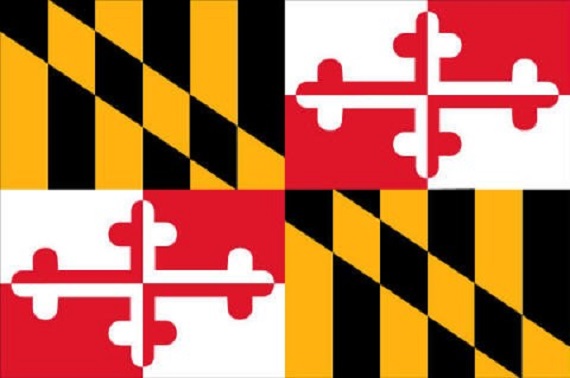
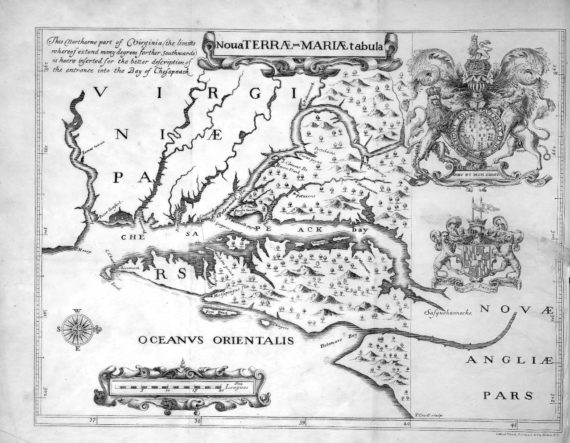

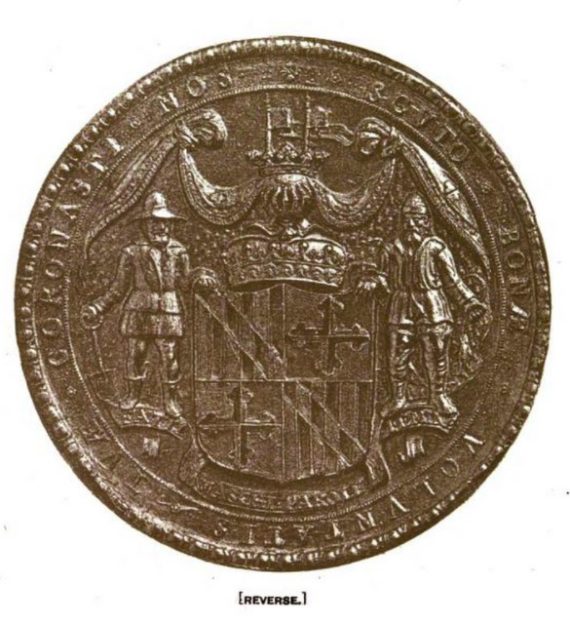
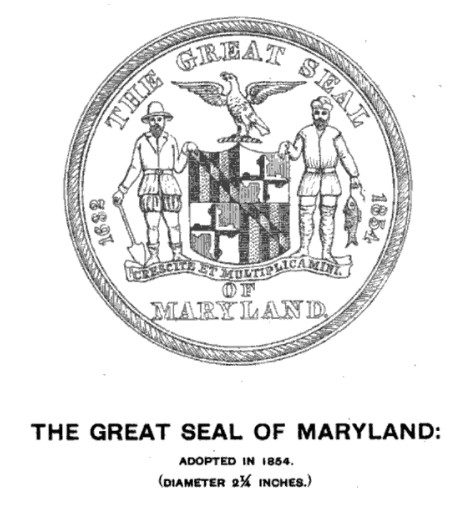
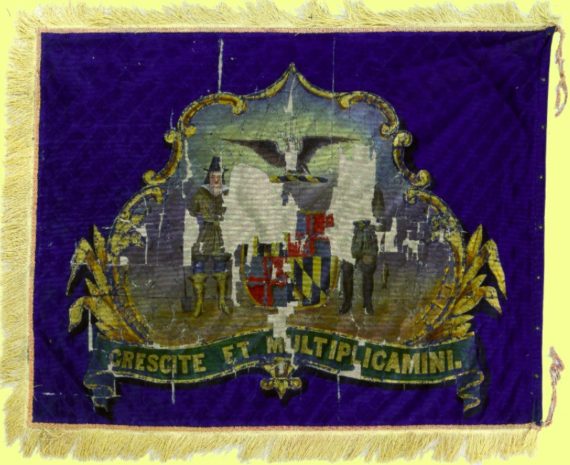
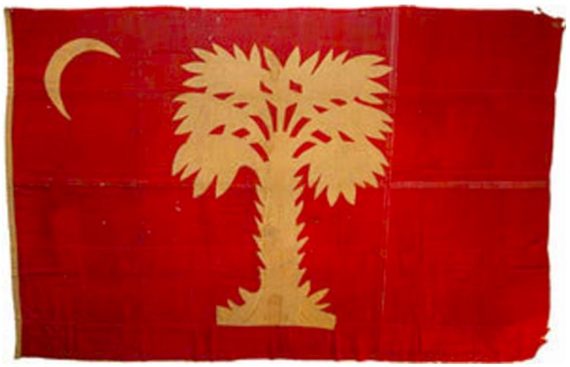
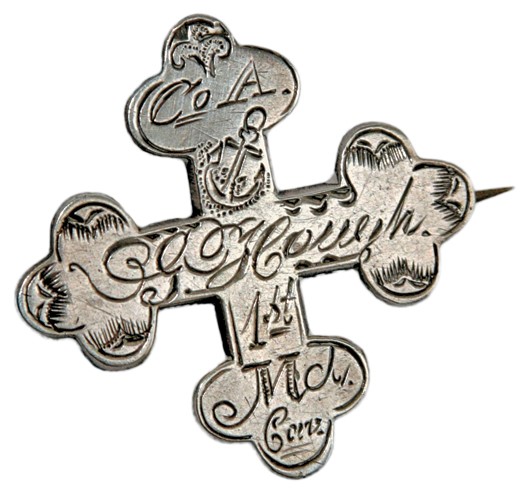
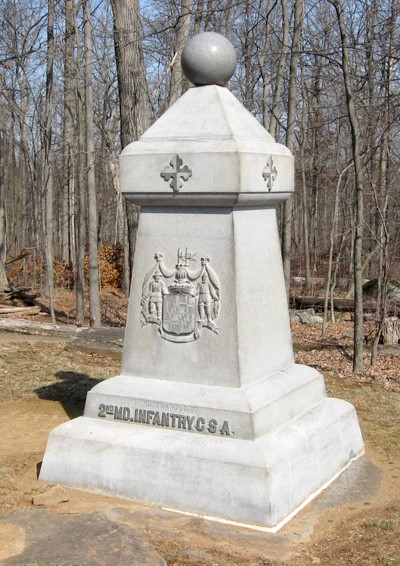
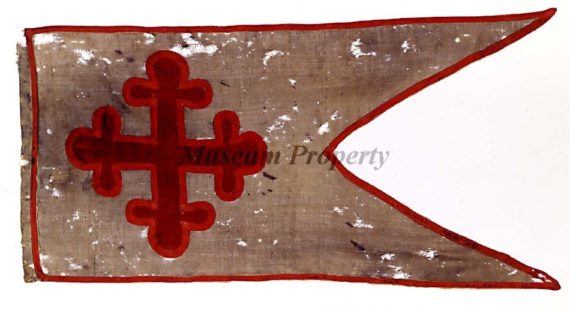
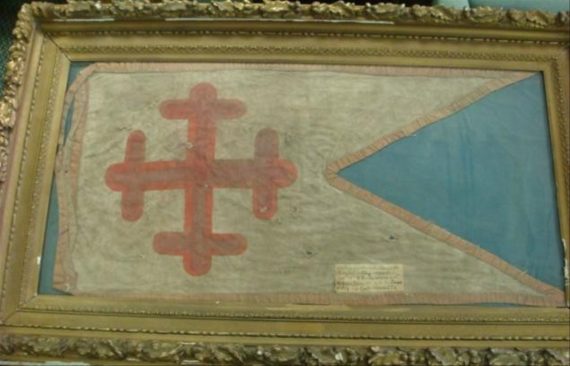
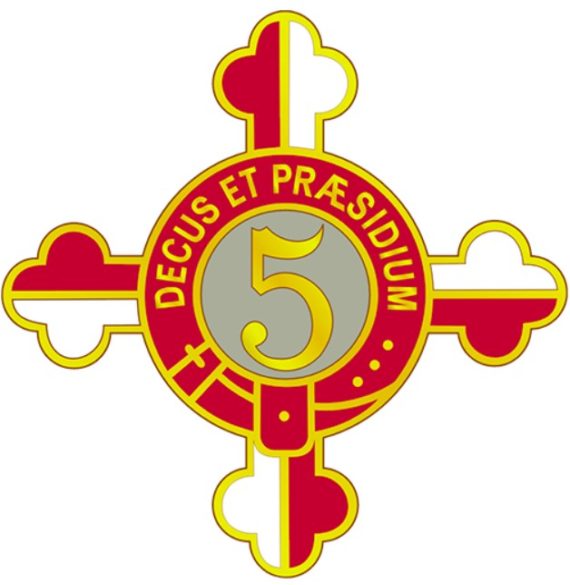
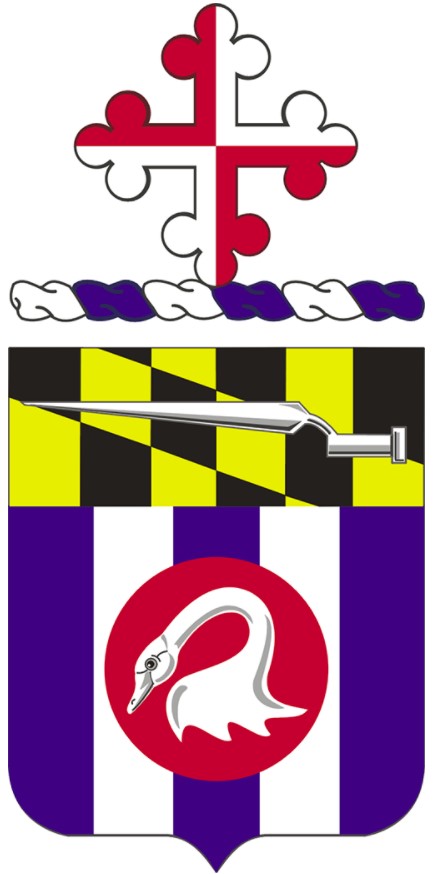
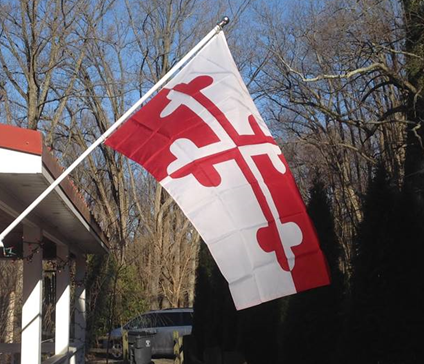
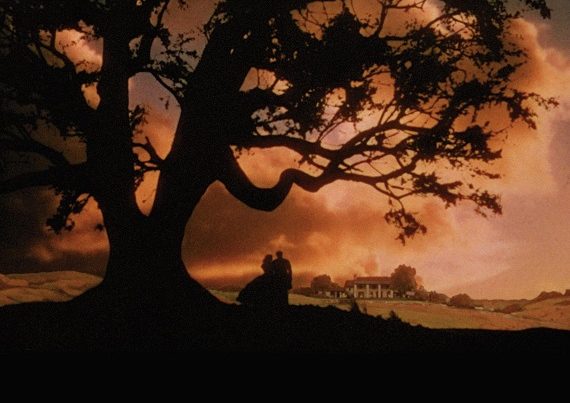



One Comment